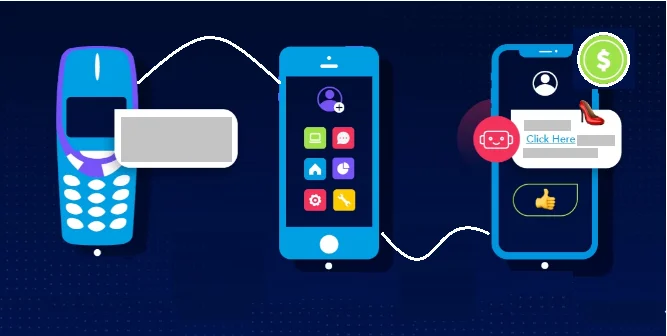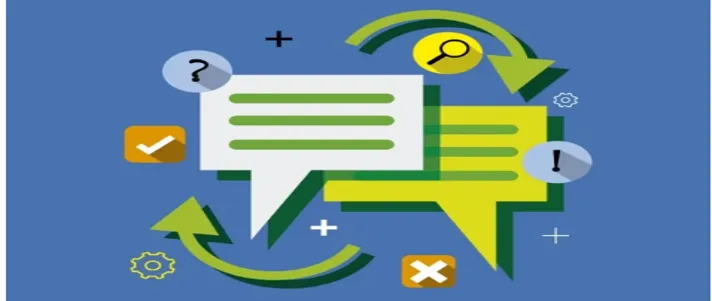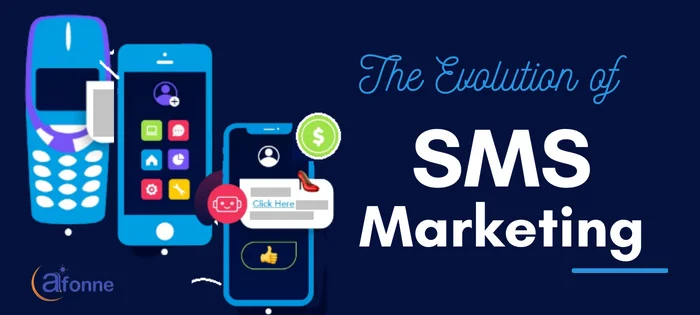The Evolution of SMS Marketing: A Deep Dive
A deep dive into the evolution of SMS marketing; the past, present, and future Short Message Service.
SMS Marketing has not always been. As the world transitions towards digital methods of communication, numerous technologies have come and gone, while some have risen, developed, and gone on to become integral parts of our daily lives.
Among the myriad ways we’ve learned to connect and communicate, one has held its ground firmly amidst technological advancements— Short Message Service or SMS.
Despite the advent of various social media platforms, SMS marketing remains a vital part of the business ecosystem.

This article will provide an in-depth analysis of the evolution of SMS marketing, tracing its humble beginnings, exploring its current significance, and looking toward its potential future.
Just before we cut to the chase, effective SMS marketing is enabled by dedicated tools, hence here is a review of the best SMS marketing software.
Chapter 1: The Humble Beginnings

In the early days of Information Technology (IT) and digital communication, SMS came into existence.
It all began in 1992 when the first-ever SMS was sent by Neil Papworth, a developer at Vodafone. This was a simple season’s greetings message, yet it marked the inception of a new era.
The idea that text messages could be used as a form of communication was novel, and the impact that this technology would have on the world was unimaginable.
From this modest beginning, SMS started its journey of transformation. This was a time when mobile phones were just beginning to find their way into the mainstream market.
During this period, the primary application of SMS was personal communication. It provided an easy and accessible means for individuals to communicate with friends and family.
This was the first iteration of SMS usage, limited to interpersonal communication, yet laying the groundwork for more expansive uses of the technology in the future.
As mobile phones became increasingly affordable and available, their penetration deepened. The decade of the 1990s marked a time of exploration for mobile technology, and it was during this time that businesses began to notice the untapped potential of SMS.
The accessibility, immediacy, and personal touch provided by SMS started to catch the attention of marketers.
Chapter 2: The Emergence of SMS Marketing

With the dawn of the 21st century, businesses started exploiting the possibilities of SMS as a marketing medium. Initial campaigns were rudimentary, often just comprising reminders or alerts. SMS was primarily used as a notification tool rather than a robust marketing channel.
Businesses could inform customers about sales, new product launches, or important announcements. It was a simple, yet effective, way to reach customers directly.
Despite its simplicity, the advent of SMS marketing was revolutionary. It signified a shift in marketing paradigms. The customer, who was once a passive receiver of marketing information, now became an active participant in the marketing process.
SMS marketing, for the first time, allowed people and businesses to cut through the noise and establish a direct connection with their customers.
Throughout the early 2000s, the capabilities of SMS marketing continued to expand. Marketers started experimenting with different formats and techniques to maximize their reach and effectiveness.
These included strategies like promotional campaigns, loyalty programs, and even simple customer service interactions.
Over time, the use of SMS marketing started becoming more sophisticated.
Chapter 3: SMS Marketing Matures

The past decade has seen SMS marketing transform from a basic communication tool into a versatile and powerful marketing channel. The advancements in technology have provided the necessary impetus for this revolution. Today, businesses use SMS for a plethora of purposes, including sending coupons, appointment reminders, shipping information, and customer surveys.
Automation has been one of the key drivers of this transformation. Marketing automation software has given businesses the ability to send scheduled messages to their customers, thereby increasing efficiency and reducing manual effort.
This feature has made it easier for businesses to manage their campaigns and ensure that they reach their customers at the right time.
Furthermore, customer segmentation has emerged as another crucial aspect of advanced SMS marketing. This practice involves dividing a business’s customer base into distinct groups based on certain criteria like buying behavior, demographics, or preferences.
It allows businesses to tailor their messages according to the specific needs and preferences of each segment, thereby enhancing the relevance and effectiveness of their campaigns.
Personalization is another feature that has elevated the stature of SMS marketing. Today’s consumers crave personalized experiences, and businesses have recognized this need.
Through personalization, businesses can make their customers feel valued and understood, leading to increased customer loyalty and satisfaction. Features like these have transformed SMS marketing, making it a vital part of the contemporary marketing landscape.
Chapter 4: The Future of SMS Marketing

While SMS marketing has come a long way since its inception, it’s far from reaching its zenith. As technology continues to advance, it’s expected that the future will hold even more exciting possibilities for this marketing medium.
The growth of Artificial Intelligence (AI) and Machine Learning (ML) technology is one of the key trends that’s likely to shape the future of SMS marketing.
As these technologies mature, they could allow businesses to analyze customer behavior and preferences more accurately.
This, in turn, would enable even more targeted and personalized messaging, thereby further enhancing the effectiveness of SMS marketing campaigns.
Moreover, the integration of SMS with other digital marketing channels is expected to gain momentum in the coming years. Combining SMS with email marketing, social media, or mobile apps could create a more holistic and impactful marketing strategy.
This multichannel approach could allow businesses to reach their customers through their preferred channels, thereby increasing engagement and conversion rates.
Conclusion
In conclusion, the journey of SMS marketing from a basic communication tool to a powerful marketing channel has been nothing short of remarkable.
Despite the rapid advancement of technology and the emergence of new digital marketing channels, SMS marketing continues to hold its own.
The future is expected to bring even more exciting developments, offering businesses unprecedented opportunities to connect with their customers and drive growth.
This compelling story of evolution, resilience, and transformation is a testament to the enduring relevance and potential of SMS marketing.
Frequently Asked Questions About THE EVOLUTION OF SMS
MARKETING
SMS Marketing is a type of direct marketing that uses text messages to reach customers. It is an effective way to communicate with customers, build relationships, and promote products and services.
SMS Marketing has evolved significantly over the years. It has become more sophisticated with the ability to personalize messages, segment audiences, and track performance. There are also now more advanced features such as automated workflows and two-way conversations.
SMS Marketing is a powerful tool for businesses. It is cost-effective, has a high open rate, and delivers timely messages directly to customers. It also provides an easy way to measure the success of campaigns and build customer loyalty.
The main drawback of SMS Marketing is that it has a limited character count. This can make it difficult to convey complex messages and can lead to messages being misinterpreted. It is also important to ensure that messages comply with data protection regulations.
Written By
CID
CID is a Software Engineer cum Digital Marketer. He launched Auditorical in 2018, a platform that empowers creators, agencies, and businesses with tools, software reviews and informational resources to create, distribute, and monetize content.

